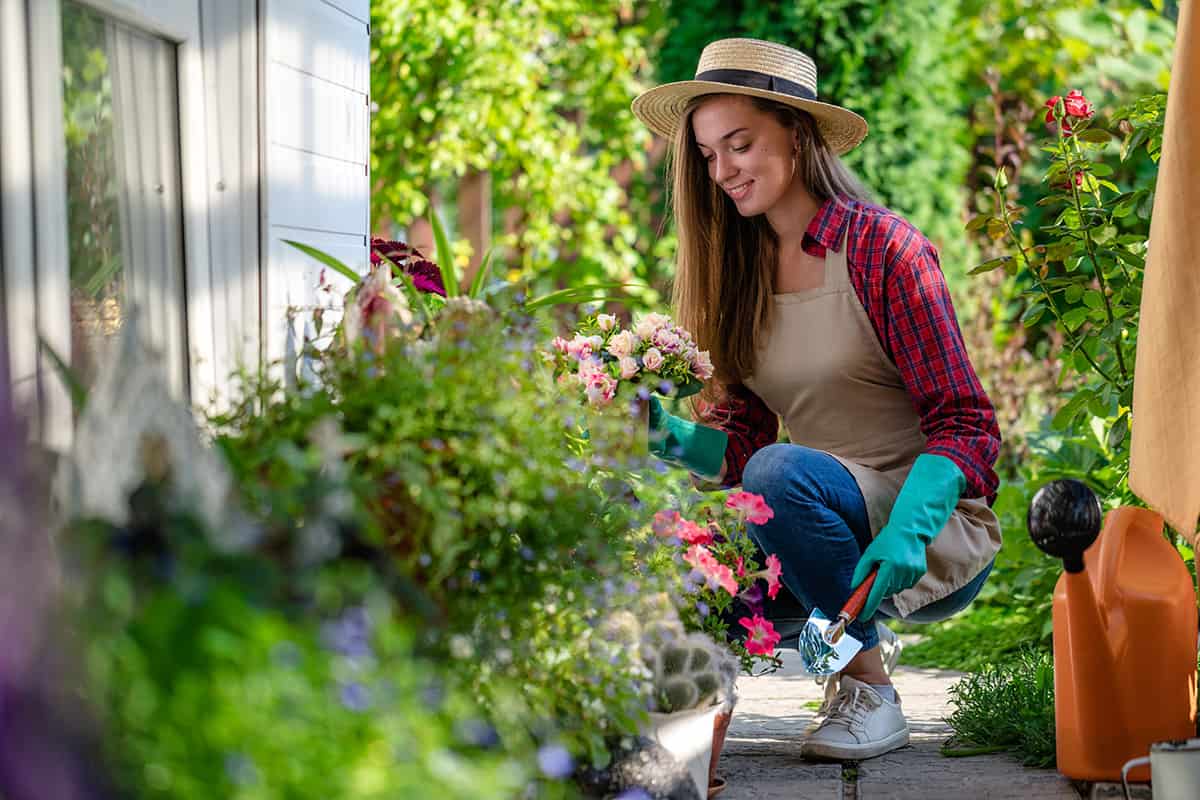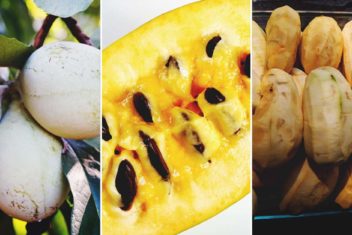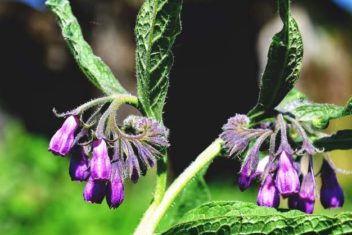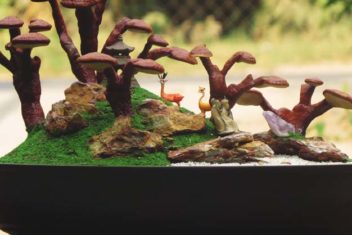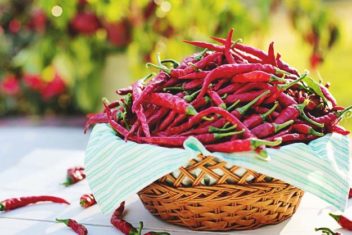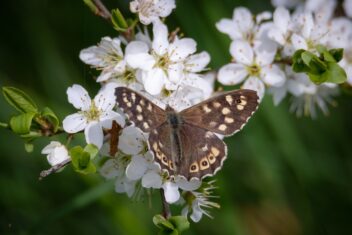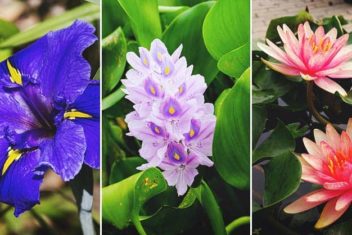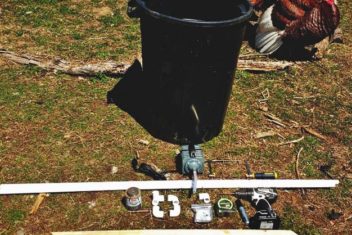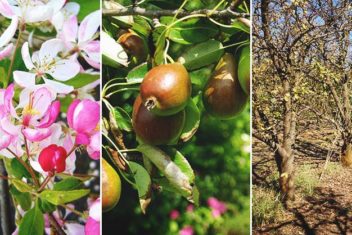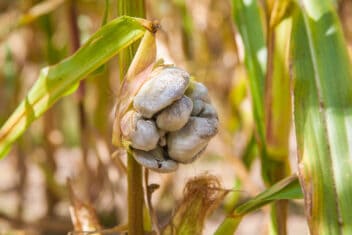Although humans have caused a lot of harm to native species, we have the ability to counteract some of this damage. One of the ways we can do that is to get our land certified as a wildlife habitat.
Wildlife stewardship is more important now than ever. In the US alone, wild bird populations have declined by over 40% in the past 70 years. Habitat loss, pesticide poisoning, and climate change have put countless species at risk.
We can ensure that there are protected areas where birds, insects, mammals, amphibians, and reptiles can live and reproduce safely. Here’s how.
What Do You Need for a Certified Wildlife Habitat?
There are five criteria for getting an area of your land certified as a wildlife habitat. These are food, water, cover, places to raise young, and sustainable practices. If you’re a homesteader, chances are you already have a lot of these going on already.
Alternatively, if you have a bit of yard that you think would be perfect for this, we have some helpful tips on what these criteria mean, and how to adapt them to your space.
Don’t think that you need a giant yard to make this happen. Even a small suburban space can be certified.
The application costs $20, with proceeds going directly towards wildlife protection. The website above can offer certificates to those in the USA and Canada. Those of you in the UK, various European countries, Australia/New Zealand, etc. will have to check out opportunities with your local nature conservancy programs.
Let’s break down each requirement:
1. Food
You need to provide three different types of food sources to be certified as a wildlife habitat.
One of the easiest ways to provide food to native wildlife is in the form of feeders. These can be hanging or platform-type feeders that you keep filled with seeds for squirrels and birds. You can offer nectar-filled feeders for hummingbirds and butterflies. If your land is large enough, you may also be able to provide hay feeders for deer.
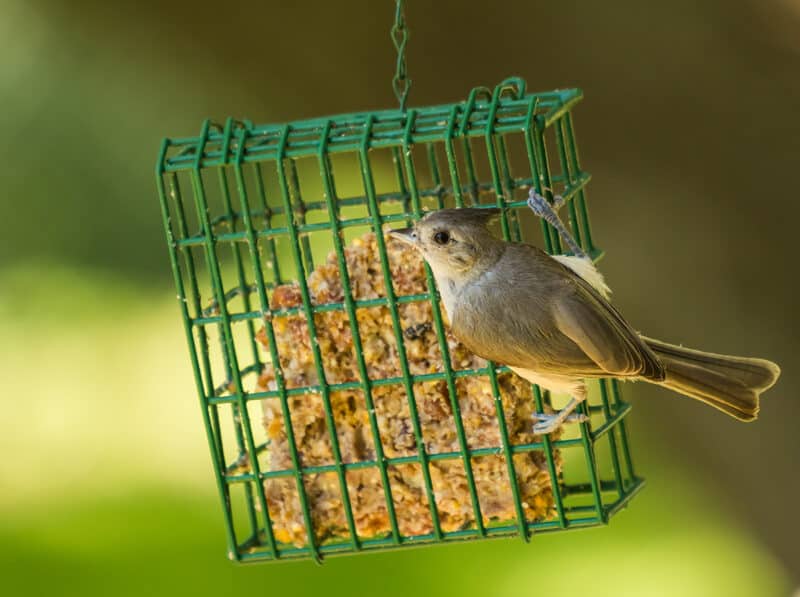
These feeders can be costly to keep filled. As such, keep an eye out for when wild bird seed goes on sale. You can also make your own suet balls, which are invaluable for feeding the wee ones in wintertime.
The species that are native to your area have been feeding on wild plants for a long time. Depending on which animals live nearby, they might dine on fruits, nuts, seeds, berries, pollen, sap, and/or nectar.
If you already have these growing on your property, great! If you don’t have them yet, but you want to plant them for your wildlife habitat, choose native species. The animals in your area will have evolved to eat from those trees and shrubs. You’ll be feeding them familiar foods, which do wonders for their overall health.
Do some research to find out which native species thrive best in your area, in the soil you have. For example, the fruit and nut trees that thrive in upstate New York aren’t going to do too well in New Mexico. Check out some local field guides for ideas about which animals are likely to hang out nearby, and what they like to eat.
In addition to the mammals and birds that like to sip, sap, or munch on nuts and berries, you may get a variety of herbivores—or opportunistic omnivores—in your area. Deer and rabbit, which are browsers and grazers, are common.
Remember that many beneficial insects are herbivores too. Specifically, the animals and insects that only eat leaves are folivores. As an example, monarch butterfly caterpillars need a ton of common milkweed (Asclepias syriaca) to nourish them while they’re growing.
2. Water
You’ll need to offer one reliable water source for your wildlife habitat. This can be either a man-made or natural type of water feature.
A man-made water source is something created by humans. More often than not, these refer to fountains or birdbaths. If you go this route, make sure you clean them regularly, so they don’t breed potentially harmful pathogens. They’ll also need to be kept warm in the wintertime if you live in an area where water freezes.
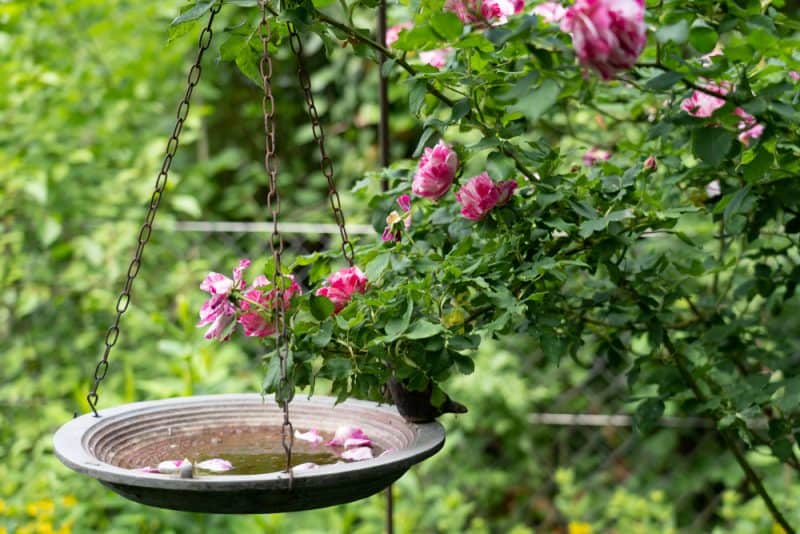
Rain gardens, artificial ponds, and barrel container gardens are also great options to keep animals and birds well hydrated. Just remember to please put in a large stick, rocks, or other climb-able items in case small animals fall in.
It’s heartbreaking to have to scoop drowned critters out of your pond because there was no way for them to get out again. Wildlife habitats aim to preserve and nurture life, so let’s do our best to make them as safe as possible.
In contrast, natural water sources are those that exist whether we interfere with them or not. They’re areas where water accumulates naturally and can include ponds, creeks, streams, and rivers, as well as wetlands.
There are two boggy wetland areas on my property, for example, and a tiny waterfall that feeds into a creek. Birds and squirrels sip from the waterfall; the wetlands are home to frogs, snakes, and salamanders. The cattails that grow there offer shelter and snack opportunities to red-winged blackbirds. Deer, raccoons, foxes, and coyotes all drink from the creek.
Water is life, and natural water sources also support moisture-loving plant species.
3. Safe Cover
You’ve probably noticed that life feeds on life out in the wild. I can’t count how many examples I’ve seen of predator/prey behavior out here in the woods. There are predators and prey, and the latter need safe places to hide from those who like to eat them.
Additionally, safe cover areas can shield wildlife from the sun, rain, snow, and strong winds. You need to offer two types of shelter for your certification.
The type of safe cover to provide will depend entirely on the types of animals that will frequent your land.
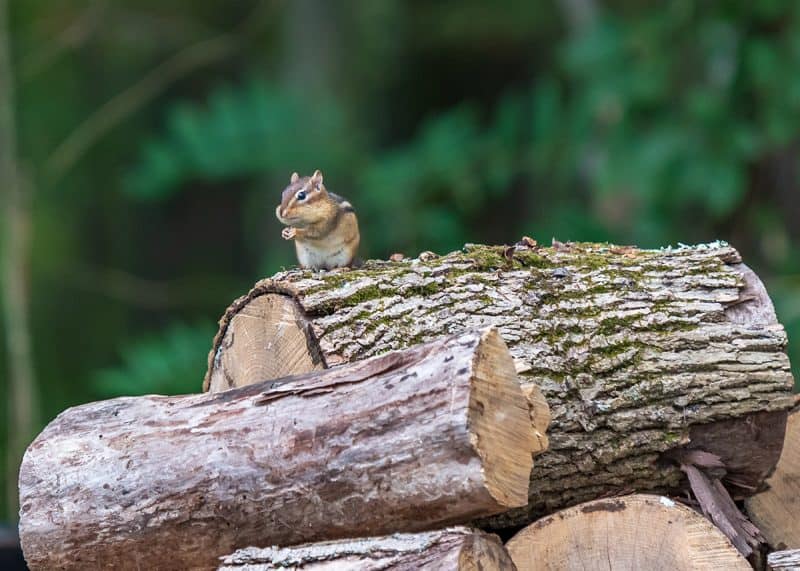
For example, if you mostly have small songbirds flitting about, and they’re at risk of being hunted by hawks or cats, offer them some shrubs and thickets to hide in. Small mammals like chipmunks can also take shelter in these and in rock and log piles.
Deer do well in larger thickets, as well as meadows full of tall grasses. If you have quite a bit of land, cultivate wooded areas with dead trees and small caves for various species to shelter in.
4. Habitats/Places for Wildlife to Raise Young
Safe shelter is one thing, but protected areas for species to breed and raise another generation are another story. Again, the places that you create (or leave available) will depend on your local species, and you’ll need to offer two for your certification.
Animals that live in burrows—such as most rabbits, chipmunks, marmots, badgers, foxes, and burrowing owls–appreciate dead tree roots and small caves to shelter in. Dead trees left standing are great for various bird species, especially if woodpeckers have created some nice hollows in them. Large, mature trees are great for squirrel and bird nests, and a variety of small mammals appreciate dense thickets.
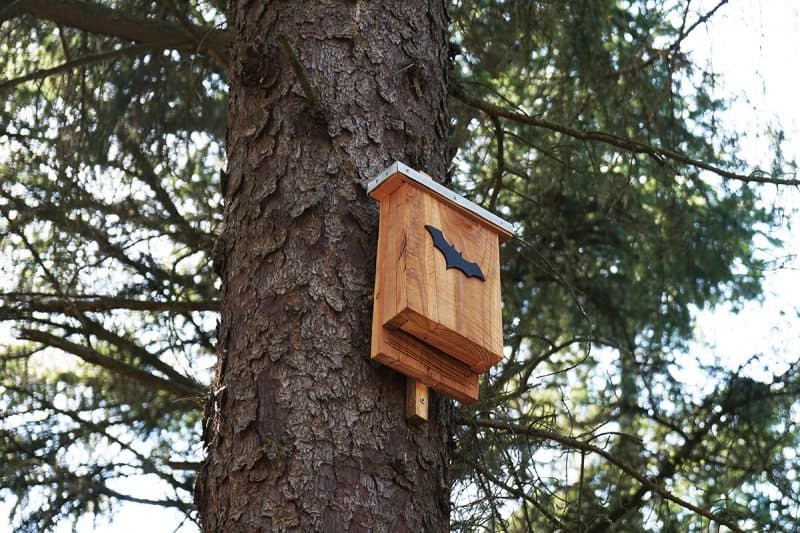
If you don’t have much space, you can put up bat boxes and roosting boxes. If you’re not familiar with the latter, they’re basically larger versions of birdhouses. They often have space for multiple bird families and have thicker walls for shelter, as well as perches inside them.
5. Sustainable Practices
In simplest terms, this means showing that you’re putting certain practices into place that will keep the area healthy and safe for years to come. These should include two of the following:
Controlling Non-Native Species
Invasive species can wreak a ton of havoc on animal and insect habitats. I don’t know who decided it was a good idea to plant sweet peas on my property before I bought it, but I’ve been battling to keep it from taking over the forest for a decade now.
You’ll need to do your best to keep non-native animal, plant, and insect species from making themselves comfortable in your wildlife habitat. One major interloper is the domestic cat. Many people think that allowing their cats to roam outside is a great idea, but it isn’t.
According to a study done by the US Fish and Wildlife Service in cooperation with the Smithsonian Conservation Biology Institute, domestic cats (particularly feral ones trying to survive) kill around 3.7 billion birds, and 20 billion mammals every single year.
And that’s just in the United States.
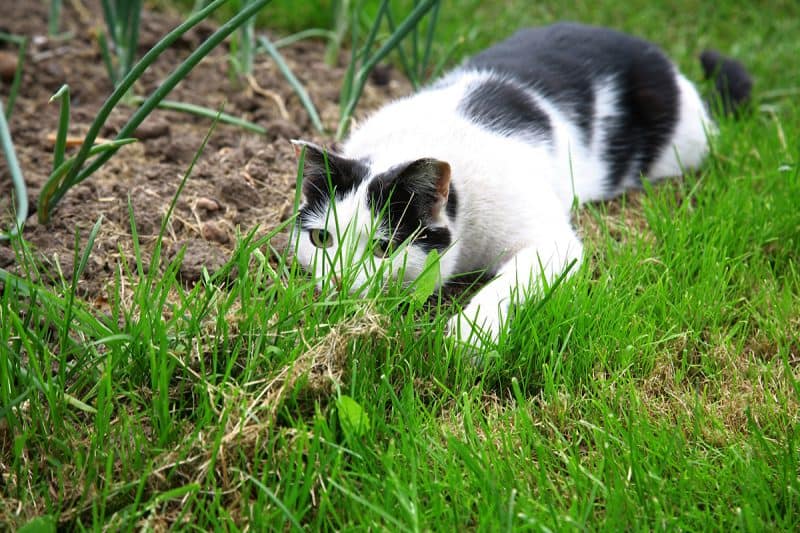
Keep pet cats indoors, and make sure the spaces you create outside are safe from feline interlopers: plant lavender, pennyroyal, rue, and lemon thyme around your habitats. Leave citrus peels around, and toss some rubber snakes around for good measure.
It’s not just the large animals, however. Be aware of small insects, as well. Some people introduce earthworms into their garden (or into the wild when they go fishing). But in North America, earthworms aren’t native, and they’re causing damage to the ecosystem there.
Don’t introduce earthworms to your garden, if you can help it.
Organic/Non-Toxic Maintenance
Ditch any chemical pesticides, fertilizers, fungicides, and insecticides. If your septic system overflows into the local water table, choose non-toxic personal care products like Castile soap and eco-friendly detergents. Use diatomaceous earth, apple cider vinegar, neem oil, etc., to combat insect pests.
Basically, don’t put anything into the habitat that might poison any of the visitors there.
Water and Soil Conservation
You’ll want to keep that area healthy for years to come. That means ensuring that the land isn’t going to erode out from under you and that there will be plenty of water for all the species to thrive. Ensure that natural water sources are clear and healthy, and plant trees and shrubs that combat erosion. Plant winter cover crops and let them decompose in place to put nutrients back into the soil.
Be Aware that Wildlife May Intrude on Your Food Garden
Having a wildlife habitat on your land is a wonderful way to help nurture local indigenous species. That said, the beings you invite into your space will inevitably meander into different areas. The deer that nibble the wild berry bushes might also take a liking to your pea shoots and lettuces, for example. Birds may decimate your berry crops, and butterfly or moth larvae might eat all your kale.
As a result, you may want to take protective measures to separate your food-growing initiatives from the wildlife area. Put up fencing to keep large herbivores out. Use floating row covers to fend off egg-laying insects. Plant alliums around beds, cover berry bushes with fine mesh and harvest fruit as soon as it’s ripe.
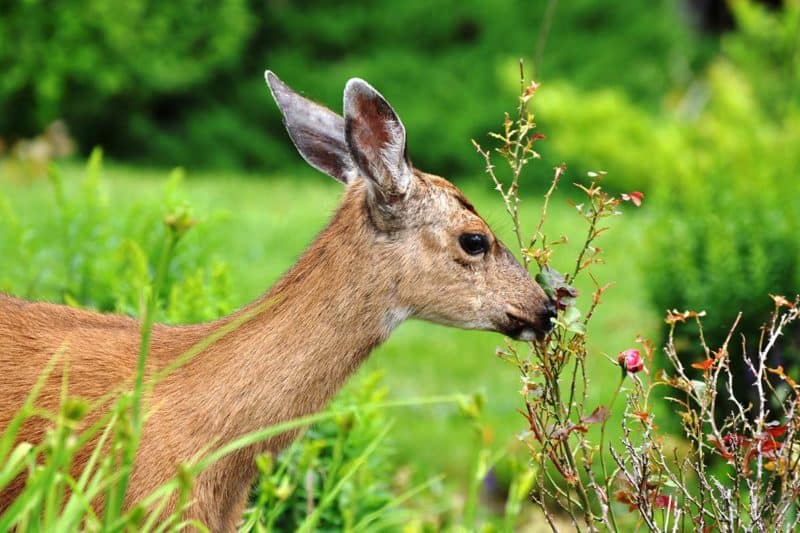
We can absolutely live in harmony with the wild cousins as long as we’re aware of their nature. They’re going to want to eat delicious things growing nearby, as much as you’ll want to eat the fruits of your labors. By being aware of this ahead of time, you can reduce your own frustration while ensuring their wellbeing.
Added Bonus: Paperwork to Silence Nosy Neighbors
Do you live in an area where people tend to have maniacally manicured lawns? If so, you may have had to deal with neighborhood watch types giving you grief for growing tomatoes in the front yard, or allowing “unruly” wildflowers to run rampant.
Once you’ve received your certification as a wildlife habitat, which you can apply for here, you’ll get a handy certificate to frame and display. You can also purchase a beautiful sign to display to the neighborhood. On the off chance that the local council gives you grief, just point to the sign, and they should go away.
